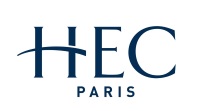No 1006: Properties of Instrumental Variables Estimation in Logit-Based Demand Models: Finite Sample Results
Rick L. Andrews () and Peter Ebbes ()
Abstract: Endogeneity problems in demand models occur when certain factors, unobserved by the researcher, affect both demand and the values of a marketing mix variable set by managers. For example, unobserved factors such as style, prestige, or reputation might result in higher prices for a product and higher demand for that product. If not addressed properly, endogeneity can bias the elasticities of the endogenous variable and subsequent optimization of the marketing mix. In practice, instrumental variables estimation techniques are often used to remedy an endogeneity problem. It is well known that, for linear regression models, the use of instrumental variables techniques with poor quality instruments can produce very poor parameter estimates, in some circumstances even worse than those that result from ignoring the endogeneity problem altogether. The literature has not addressed the consequences of using poor quality instruments to remedy endogeneity problems in nonlinear models, such as logit-based demand models. Using simulation methods, we investigate the effects of using poor quality instruments to remedy endogeneity in logit-based demand models applied to finite-sample datasets. The results show that, even when the conditions for lack of parameter identification due to poor quality instruments do not hold exactly, estimates of price elasticities can still be quite poor. That being the case, we investigate the relative performance of several nonlinear instrumental variables estimation procedures utilizing readily available instruments in finite samples. Our study highlights the attractiveness of the control function approach (Petrin and Train 2010) and readily-available instruments, which together reduce the mean squared elasticity errors substantially for experimental conditions in which the theory-backed instruments are poor in quality. We find important effects for sample size, in particular for the number of brands, for which it is shown that endogeneity problems are exacerbated with increases in the number of brands, especially when poor quality instruments are used. In addition, the number of stores is found to be important for likelihood ratio testing. The results of the simulation are shown to generalize to situations under Nash pricing in oligopolistic markets, to conditions in which cross-sectional preference heterogeneity exists, and to nested logit and probit-based demand specifications as well. Based on the results of the simulation, we suggest a procedure for managing a potential endogeneity problem in logit-based demand models.
Keywords: Choice Models; Endogeneity; Econometric Models; Instrumental Variables
39 pages, December 10, 2013
Full text files
papers.cfm?abstract_id=2251772
Questions (including download problems) about the papers in this series should be directed to Antoine Haldemann ()
Report other problems with accessing this service to Sune Karlsson ().
RePEc:ebg:heccah:1006This page generated on 2025-06-10 11:14:55.

